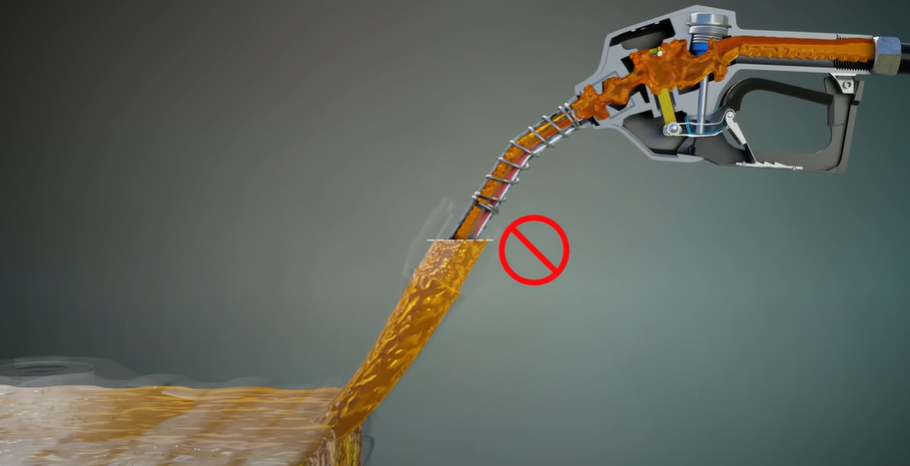The automatic shutoff system in fuel pumps uses pressure sensors and advanced mechanisms to prevent overflow during fueling. This technology ensures precise and efficient fuel management. That satisfying click bringing the torrent of gasoline to a halt gives us just enough time to replace the nozzle before our tank overflows. But how does the gasoline pump know […]
The automatic shutoff system in fuel pumps uses pressure sensors and advanced mechanisms to prevent overflow during fueling. This technology ensures precise and efficient fuel management.
That satisfying click bringing the torrent of gasoline to a halt gives us just enough time to replace the nozzle before our tank overflows. But how does the gasoline pump know precisely when to stop itself before making a mess? Let’s delve into the clever fuel flow mechanisms that make automatic shutoff possible.
Here are a few methods that manufacturers utilize to auto shutoff fuel pumps:

Modern “vapor recovery” nozzles incorporate an evacuated bellows chamber that gets compressed by fuel vapors when the nozzle opens. This bellows connects to a pressure-sensitive electric switch. As vapor flows, the switch signals the gasoline pumps to activate. Solenoid valves open to allow fuel to move through the hose to the nozzle.

So the pump knows when to start, but how does it determine when to stop? That question involves a phenomenon occurring inside the fuel tank pump called “head pressure.”
As the tank fills, air pockets get compressed into a smaller space. This increases air pressure at the top of the tank, which exerts downward force on the fuel itself. The fuel level rises, but the weight of the liquid above resists more fuel entering – like blowing up a balloon to capacity.
When the tank nears full, the pressure buildup causes back pressure against more fuel flowing in. Sensors detect this pressure spike and relay the signal to stop.
Many modern diesel pumps employ a venturi system that amplifies this back pressure signal. Inside the pump, the fuel passes through a venturi tube – a constriction in the pipe diameter.
This narrowing causes faster flow and localized low pressure. A diaphragm connected to this low-pressure zone gets pulled in. But when back pressure increases as the tank fills, it releases the diaphragm, which trips the pump shutoff.
The venturi effect makes the shutoff more sensitive for precision filling.
Another automatic shutoff method happens right at the nozzle tip. A small pipe called the vent tube runs along the spout and ends about 3⁄4 inch from the tip opening.
When the tank pressure builds sufficiently as fuel rises over the vent tube intake, it creates suction that pulls air through the vent tube. This air amplifies the pressure drop inside the spout, forcing the valve closed to stop fuel flow.
Modern diesel fuel pumps also rely on sophisticated electronic pump controllers to manage the entire fueling process. The controller actuates relays to start pump motors and open/close valves. It monitors flow meters and a pulser connected to the shaft of the metering unit.
By tallying the pulse signals in relation to flow rate, the controller calculates precisely how much fuel has entered the tank. The controller shuts down the pumps when it reaches the full shutoff setpoint value.
All these mechanisms work together to detect rising pressure in the tank and trigger automatic shutoff at just the right moment. The system repeats seamlessly for every fill-up, ensuring minimal spillage. Pretty ingenious for a gasoline pump relic that’s been around for decades!
Next time you appreciate that satisfying “click,” remember the carefully engineered pump internals constantly monitoring pressures to decide when your tank is topped off. And for your next forecourt or commercial fleet fueling project, equip yourself with the latest in precision automated fuel management from industry leader Aocheng. Their high-accuracy dispensers integrate advanced electronics and metering to make every drop count toward operational efficiency, whether using a diesel fuel nozzle or a 12v fuel pump.
Resources:




